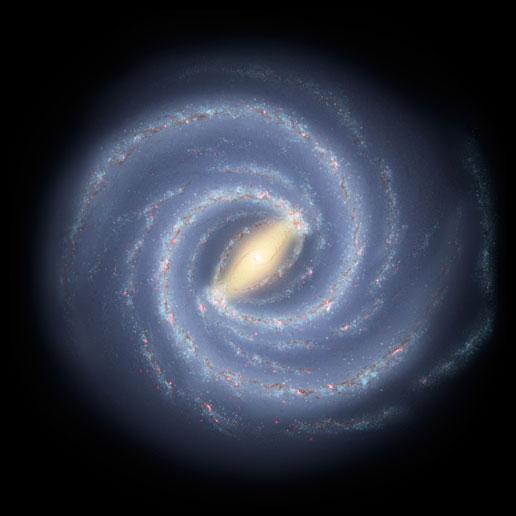Stunning bright stars, the symbol of galaxies like the Milky Way, could be fragments from intense collisions with other planets, or galaxy-sized dark matter concentrations, according to a multi-academy research project with the participation of the University of Pittsburgh.
Published in The Astrophysical Journal, November 20, this finding challenges the long-held theory that the rings around the galaxy are the remnants of smaller clusters colliding with bigger galaxy.
The team includes Andrew Zentner, professor of physics and astronomy at Pitt School of Arts and Sciences; James Bullock, professor of physics and astronomy at the University of California at Irvine; Stelios Kanzantzidis, postdoctoral researcher at Ohio State University; Andrey Kravtsov, professor of astronomy and astrophysics at the University of Chicago; with Leonidas Moustakas, researcher at NASA's Jet Laboratory, California Institute of Technology.
The team's computer simulation of galaxies shows that galaxies that originate are flat and focused star clusters. Smaller galaxies collide and tear these discs billions of years ago , causing the disc to disperse in a messy way like it is today. In addition, low-density, high-density dark matter masses are thought to occupy ¼ of the universe , sweeping through these regions and pushing stars away from the main star disk.

This scenario of the researchers explains the formation of star rings and bands surrounding galaxies like the Milky Way. However, this model also offers an explanation for how the coils of stars - scattered stars from the center of the galaxy disk - remain in shape. The spiral formed from any disc disorder.However, the prolonged disorder of the galaxy and the dark matter expand through a stellar disc that explains why these helices never disappear.
Zetner said: 'Our model shows a violent collision that has pushed the stars around now, and continues to pass through the star disk, disturbing its structure. In order for the stars to grow and maintain their well-known shape, there must be a prolonged disorder. We have found that the mass of matter traveling through the galaxy is the cause of this prolonged disorder. '
The team's findings were completely accidental. They are modeling the disks for a survey of other celestial physics when they happen to discover that stars in the main disk disperse when satellite galaxies - smaller galaxies around the large galaxy more - go through. They shared this result with colleagues 1 year ago, and this result has been repeated once more since.
Zetner said: 'One of the main advantages of these outcomes is that we don't have to look for them. They happen when we simulate existing galaxies'.
 Van Allen's belt and evidence that the Apollo 11 mission to the Moon was myth
Van Allen's belt and evidence that the Apollo 11 mission to the Moon was myth The levels of civilization in the universe (Kardashev scale)
The levels of civilization in the universe (Kardashev scale) Today Mars, the sun and the Earth are aligned
Today Mars, the sun and the Earth are aligned The Amazon owner announced a secret plan to build a space base for thousands of people
The Amazon owner announced a secret plan to build a space base for thousands of people